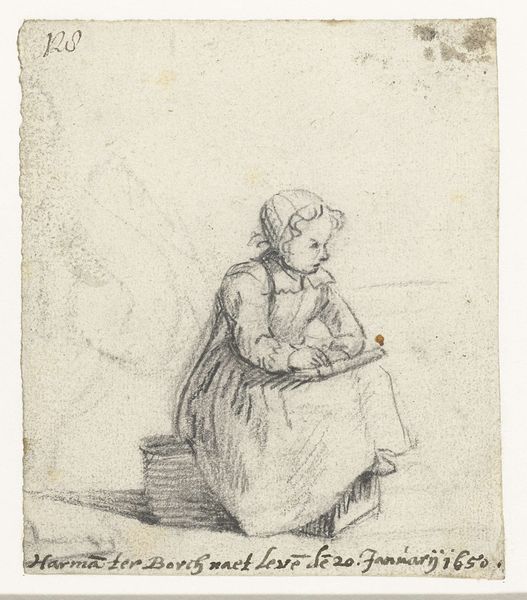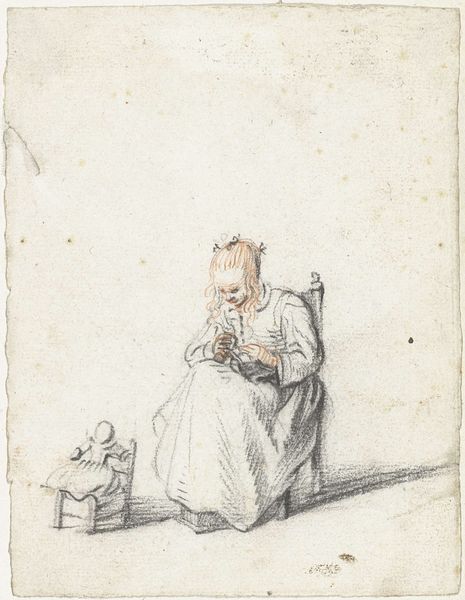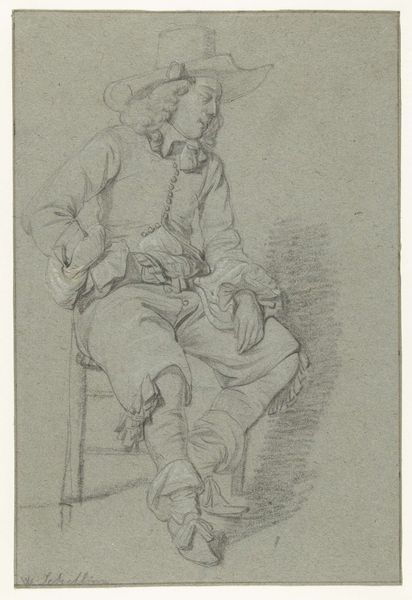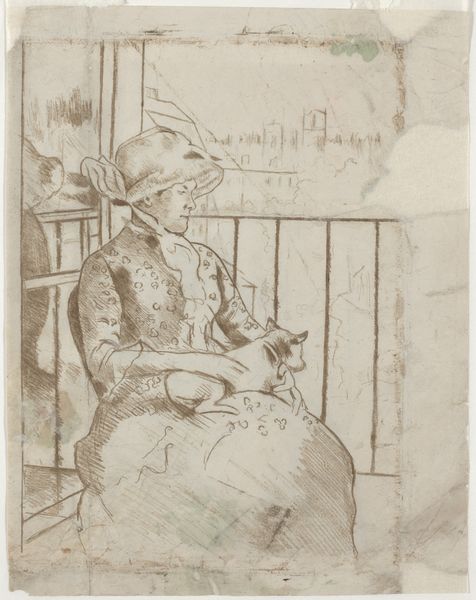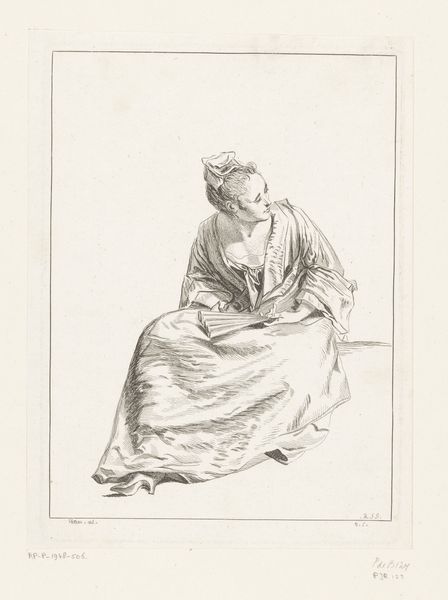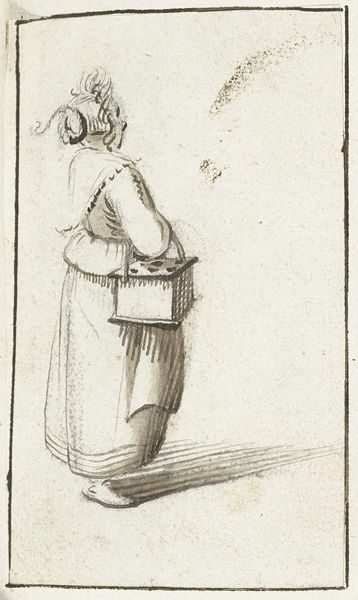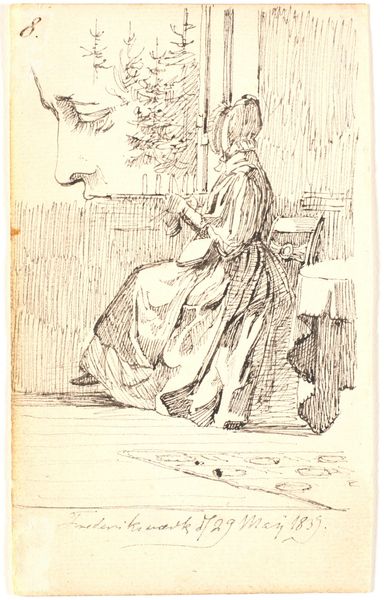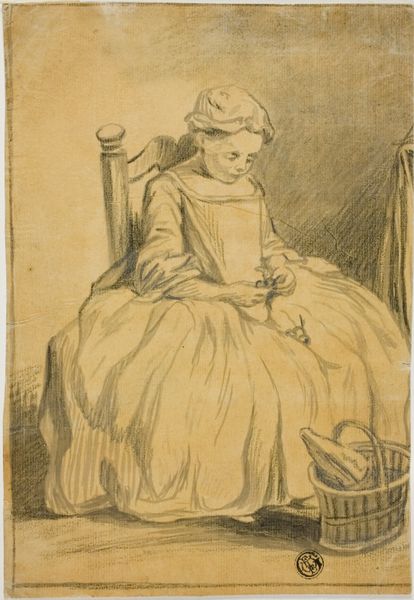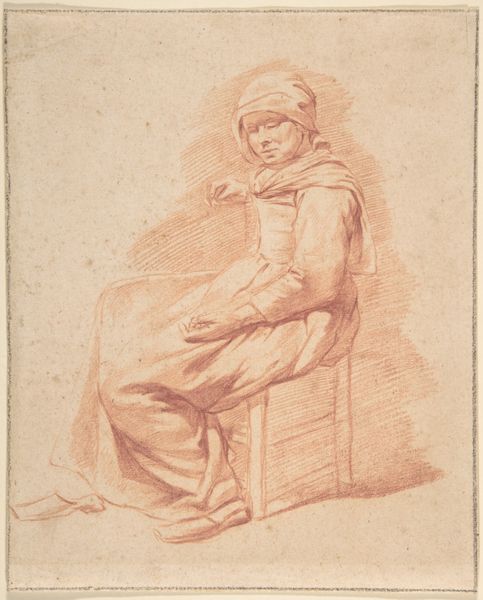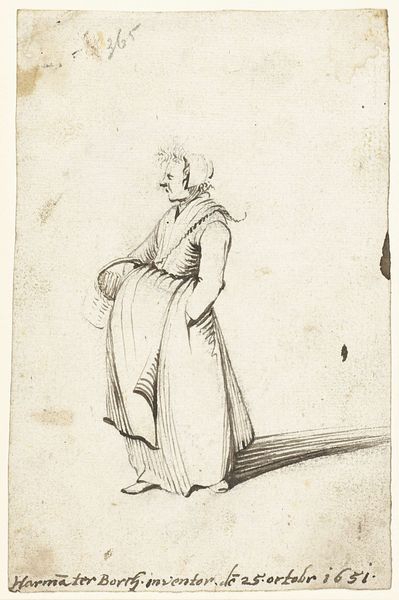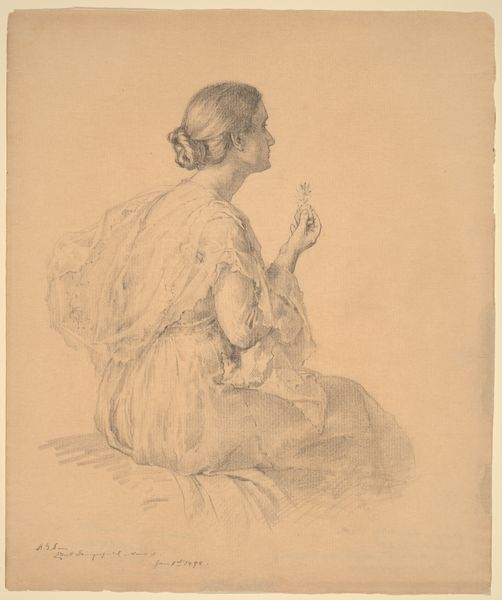
drawing, paper, ink
#
portrait
#
drawing
#
baroque
#
pencil sketch
#
paper
#
ink
#
pen-ink sketch
#
sketchbook drawing
#
genre-painting
Dimensions: height 102 mm, width 84 mm
Copyright: Rijks Museum: Open Domain
Curator: This drawing, believed to be from 1652, is titled "Young Woman Making Lace in Profile" and is by Harmen ter Borch. It's currently held in the Rijksmuseum. The medium is ink on paper, which gives it a delicate, almost ephemeral quality. Editor: There’s a certain quiet intimacy about it, isn’t there? The pen strokes are so spare, but they capture the stillness of the moment so beautifully. The lone slipper by her foot suggests domesticity, private life. Curator: Precisely. Lace-making at the time wasn't just a craft; it was an economic engine, especially for women. Ter Borch has depicted the rise of genre painting and focused on the beauty of the everyday. Editor: And there's such careful attention to her costume, even in this sketch. The folds of her dress, the intricate cap – they speak volumes about her social standing and perhaps the values placed on domestic skills at the time. It shows us the social expectation put on women to become lace makers during this era. Curator: Costume is indeed key to understanding the image, since it symbolizes much of the history of that moment. The woman is anonymous, in a sense, but the details give us insight to how the 17th-century Dutch middle class lived. But Ter Borch made sure she was not anonymous: he wrote her name in the corner of the sketch. Editor: Yes! Also, I noticed she has the lace pillow on her lap. This image captures a cultural snapshot, not just a woman at work, but also an industry and a set of gendered expectations bound together by material objects like that pillow and her delicate equipment. The symbolism of production seems right here. Curator: I agree. There is this lovely duality present. On the one hand, there is a sense of the sitter's humility while showing her in this simple garb with a singular focus, creating for economic value. On the other hand, a humble interior scene represents a major force of the Netherlands and women as being economic engines of labor and skill in their everyday lives. Editor: It’s a powerful reminder that what seems ordinary now held its own significance back then. Seeing the symbols helps us remember the lives and expectations women of the time experienced and faced. Curator: I hadn't considered it from such an individual view! It's been a rich experience. Editor: Definitely. The way we bring those past connections to present issues, especially on a deeply human level, I see those ripple effects more clearly now.
Comments
No comments
Be the first to comment and join the conversation on the ultimate creative platform.
